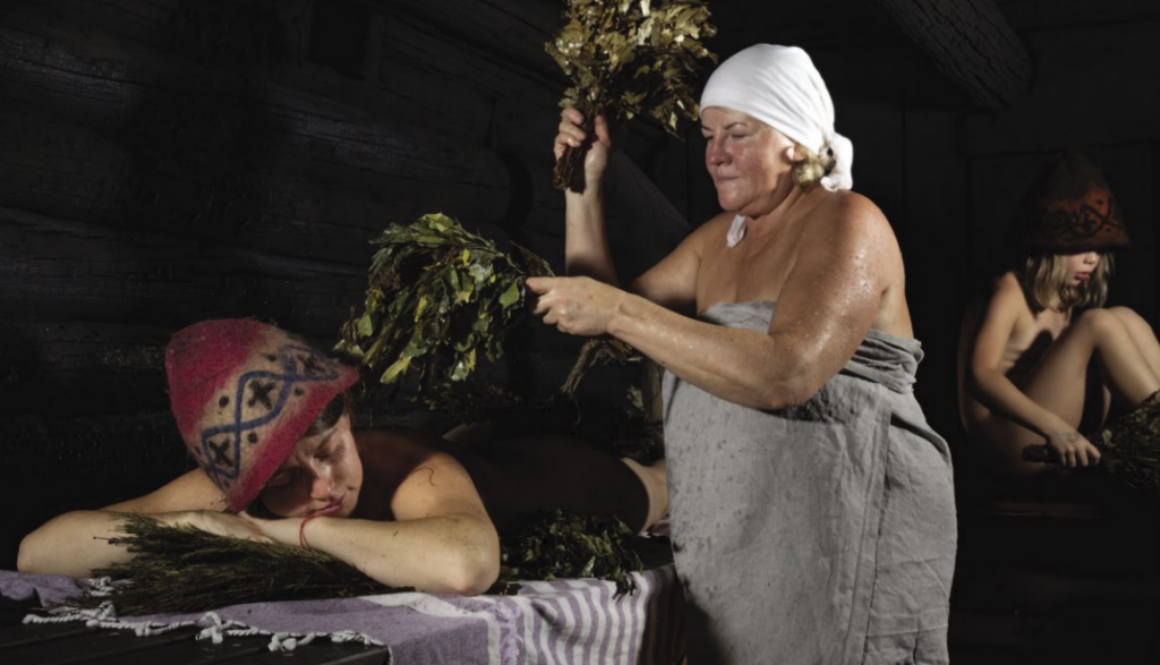Every year is a year of sauna for Estonians
For Eda Veeroja, a sauna day begins early in the morning. The old smoke sauna at her home near Haanja in Southern Estonia takes up to 7 hours of heating before it’s ready to welcome guests. The sauna has no chimney, which means that the giant oven is being heated with big logs of wood until it reaches the maximum temperature, then the sauna is aired to let the smoke out. The accumulated heat will have to last for hours without lighting a new fire or adding wood.
It’s the end of May and the leafy hills of Haanja are covered in a hint of light green, not yet mature summer foliage. We arrive in the afternoon of a mild and sunny spring Saturday to experience a special treat – a spring sauna with white lilac blossoms. We had to make whisks of fresh young birch branches for everyone as homework. Going to the forest to collect branches helps to calm the busy minds of everyday worries, connect to nature and prepare for the awaiting rituals. As a group of girlfriends, we have been going to the Mooska smoke sauna annually for 8 years for a weekend retreat to cleanse the body and soul.
In 2023, the Estonian Rural Tourism Organisation is celebrating sauna culture in all its variety with dedicated educational and marketing campaigns and events. Sauna masters have been offering their services via a website. As a lucky coincidence, a documentary by Anna Hints – “Smoke Sauna Sisterhood”, was released in 2023 and has since shot to worldwide fame with the nomination as Estonia’s entry to the Oscars as the cherry on the cake.
So, with all that in background, we feel like we are hitting a trend. Eda encourages us to take a dip in the cool pond before entering the hot sauna to clear our heads. Then it begins. She leads her sauna guests through a 4-hour journey of chants and treatments, some of them reoccurring and familiar, some new and exciting. Eda has refined sauna rituals to a level of their own after she led the process of getting the Southern Estonian smoke sauna listed as a UNESCO intangible heritage in 2014. She leads the chants in her local Võro dialect to greet the sauna, to connect with ancestors, to deal with past pain and to open up for lightness and joy in the present. The huge oven of big stones gives off a mild but deep steam when Eda pours water (leil in Estonian, lõunõq in Võro dialect) over it. Rubbing salt and ash all over our bodies really gets the sweat going in the first rounds of the sauna. Off to the cooling pond, trying not to disturb the frogs.
More than 230 saunas have opened their doors to guests in 2023 – smoke saunas, wood-heated saunas, barrel saunas, raft saunas, tar saunas, peat saunas, igloo saunas, tent saunas, glass saunas, and the list goes on and on. Apart from those most private houses, cottages and many apartments have a sauna as well. And then there are dozens of public saunas, some of them quite legendary like the Kalma sauna in Tallinn’s Kalamaja district and the fancier spa saunas of course. There’s an abundance of saunas actually that Estonians usually enjoy weekly on Saturday evenings, to celebrate get- togethers and holidays. It’s not unusual to have a work meeting in a sauna.
Original articel is avalibe here: eas.ee

